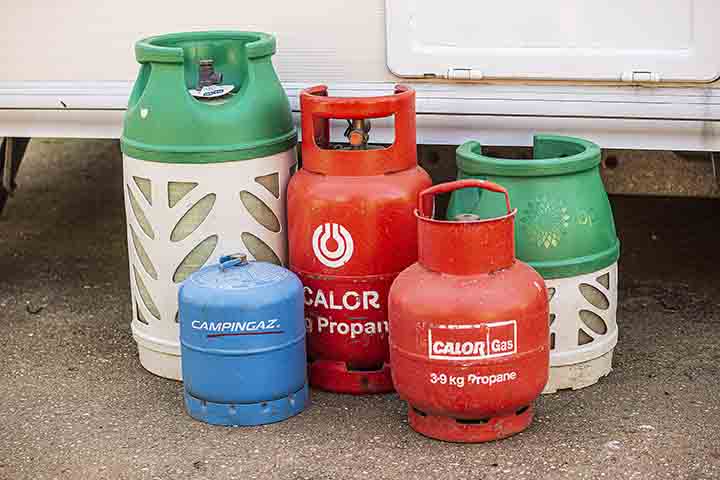
Using liquefied petroleum gas (LPG) in a caravan or motorhome is a flexible and convenient way to provide heating, cooking and refrigeration facilities, while remaining independent of site supplies. Get free help and safety advice when you join the Club.
LPG is normally supplied in a pressurised cylinder, where the fuel inside is stored under pressure as a liquid and only becomes gaseous when released and fed to the appliance. This has to be done at a suitable pressure for the appliances to use and is normally achieved by the use of a pressure-reducing regulator that supplies gas at a standard pressure to the system. Two different gases are used, propane and butane. Both are LPG products but they have slightly different characteristics.
This guide will help you make the best of your LPG installation in a caravan or motorhome, but please remember that any work on LPG equipment needs to be done by suitably trained qualified personnel.

A clip-on regulator
Larger cylinders suitable for motorhome and caravan use can come in a range of sizes and colours according to their source, but the two Calor types still predominate - red cylinders containing propane and blue cylinders filled with butane. Until September 2003, caravans and motorhomes used a different regulator depending on which gas was being used to provide the appropriate operating pressures, 28mbar (millibar) for butane and 37mbar for propane. Some units from continental Europe use different pressures, up to 50mbar.

A bulkhead-mounted Clesse regulator
Since September 2003 a European standard (EN 1949) has made the supply pressure the same for both gases throughout the EU at 30mbar. While pre-2003 units still require different regulators depending on the gas used, all current UK-built caravans run at 30mbar, and this figure should be marked in the gas locker near to the regulator.
The table shows the types of cylinders most commonly found in the UK and their weights and dimensions. Other makes may be found in different regions of the UK, but you will not always be able to exchange them outside the region. Larger sizes are available, but only for domestic use.
The Club does not permit the use of any cylinder stored outside a gas locker over 15kg capacity on Club Sites or at Club events because of safety concerns. Ideally, cylinders should be stored in the unit's gas locker. Gas cylinders must always be transported and secured in a vertical position, as lying them down may cause liquid LPG to escape through the valve and become a large volume of combustible gas.